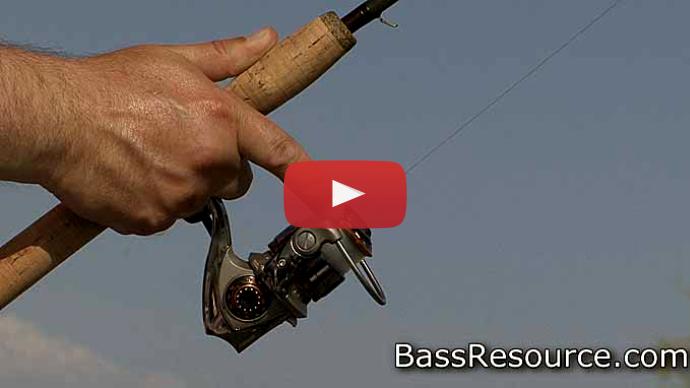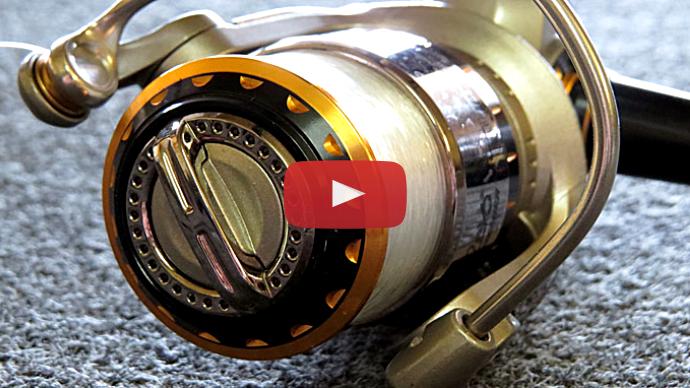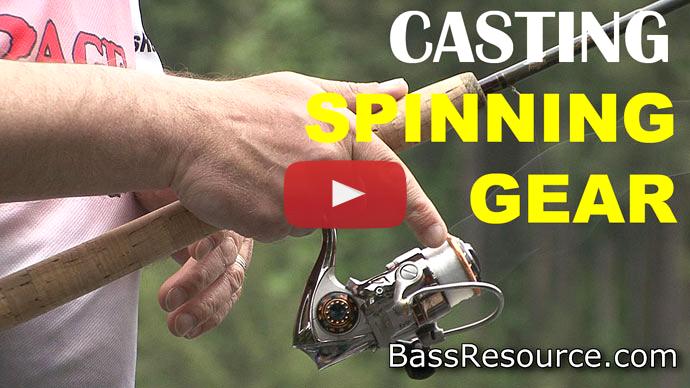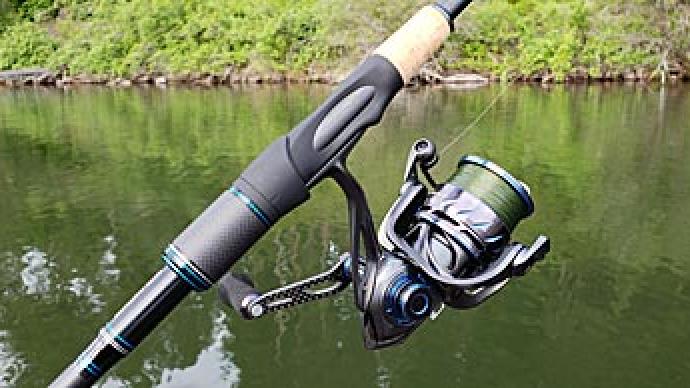Seaguar InvizX Fluorocarbon 600 Yards - https://bit.ly/39S5QPa
Hey, folks. Glenn May here with your BassResource.com. And today I wanna talk to you about how to spool line on a spinning reel. A lot of problems people have with spinning reels often are a result of putting on the line improperly. So let me walk you through how to do it correctly.
First thing you wanna do is buy in bulk if you can. Buy your line, this is a 600 yard bulk line. And the reason why, see how small that spool is? Typically when you see on the shelf, the 150 yard spools or a little bit larger. You know, they're a big spool like this. Here you wanna a smaller size, because look at the diameter of this reel. Okay? It's small. Line has a memory to it. You know, a lot of the problems with spinning reel happens to be with that memory. So you get a small diameter spool, it helps it lay down on the spool a lot easier. So we start with that.
What you wanna do is you want the line to come off the spool the same way it's gonna go on to the reel. So typically, that's label side up for most spools. Check to make sure though. Just that they all come off together. Line up your spool, line up your reel and see if they come off the same direction. One's going on the same direction, the other's coming off. That's key, paramount. That eliminates line twist. Take your reel, flip the bail. Go through just the first eye of your spinning rod.
And then what you wanna do is just...you're gonna tie it on to your reel. And the way you do that is kind of an interesting knot. It's called an Arbor knot. What you do is you take the tag end... This is where I need my glasses. Take the tag end, you wanna tie just a simple overhand knot. Now once you do that, now you got a tag end. You wanna cut the tag end off, and then you wanna tie it onto the spool. Just wrap the line around the spool. Again, make sure that bail is open. And then just tie another simple overhand knot. Once you have that overhand knot done, just cinch it down. What happens is that first knot that you made, the line will cinch right down against it. Very simple.
Now, the next thing I like to do is take a little piece of tape. Just a real thin piece of scotch tape, and I'd lay that right down on top of the knot that I just created. This does a couple things. First of all, it helps the knot from becoming an issue when you lay the line down on it. But also it holds that line in place so it makes it easier to spool onto the reel.
All right. Next thing you wanna do, this is very simple but, I’m gonna just start spooling it on. And here's the thing, as you put it on, I like to grab a rag and grab a hold of the line. Now I'll tell you why in a second. But then you just spool it on holding on to the line like this. Now why I'm doing that, I wanna put a lot of tension on the line. That makes it lay down a lot easier.
Now after about 20 turns or so, what I do is I stop for a second and I just check the line. I let go of it and check. Look, it's not kinking up, it's not twisting. Perfect. If it is twisting up on you a whole bunch, then just take the spool and flip it over the other direction and it'll lay down flat for you.
So I like to lay it down nice and tight, and the reason for that is it lays the line down really good and firm. It makes it come off a lot easier when you cast that way. So it also aids in the line to form a memory around your spool, so that it comes off a lot easier and you have a lot easier line management. Plus when using a rag, of course you don't burn your fingers when you're putting a line on it. You can use gloves if you want, but I don't wanna use leather or anything like that because that can damage the line. So a nice cloth like this usually works really well.
All right. That's about as full as I wanna get it. You wanna leave about an eighth of an inch of the spool sticking up, and there's a reason for that. That spool, that lip is there to help keep the line in place first of all. So when you flip the bail back down, the line doesn't fall and go all over the place. But also, that lip aides the line to come off the reel a lot smoother. So you wanna make sure you leave a little bit of some room there.
All right. Now that we've got that done, I'm just gonna clip off a little bit of line right about right here. There we go. Come on. I took my glasses off so it's harder for me to see. There we go. Take that off. And I just take the line, and there's a little line clip on here, if I can find it. Put that on the side of the spool, right there. Put your line around that.
Then what you wanna do is one other thing. What I like to do is I take the spool off the reel itself. And I like to put it in a glass of water, and I'll tell you why in a second. But the way you take this, you just turn the drag until it's nice and loose, then your spool's gonna come off. And you wanna do this in the upright position because there is washers and whatnot underneath here you don't want to fall all over the floor. So just lift it up once you get this all the way done and it just comes off nice and easy. There you go. Just like that, leaving the washers on.
Now what I do is I take it in some...I got some warm water. Not hot water but warm water, and just plop that in the glass. And you leave it in for about at least 10 minutes, maybe longer. What that does is it lets the line reshape and reform around your spool and that's important because then when you're casting, you're not gonna get all these loops and lines coming off your reel. And it's not gonna be a big mess. You're not gonna get all these knots and what not. It makes it a lot easier to cast, it makes it really smooth, and you're gonna have a much better day on the water.
That's all there is to it. Once I'm done, put it back on, time my lure on, and I'm ready to go fishing. Hope that helps. For more tips and tricks like this and for all the answers to all your questions about bass fishing, visit BassResource.com.




